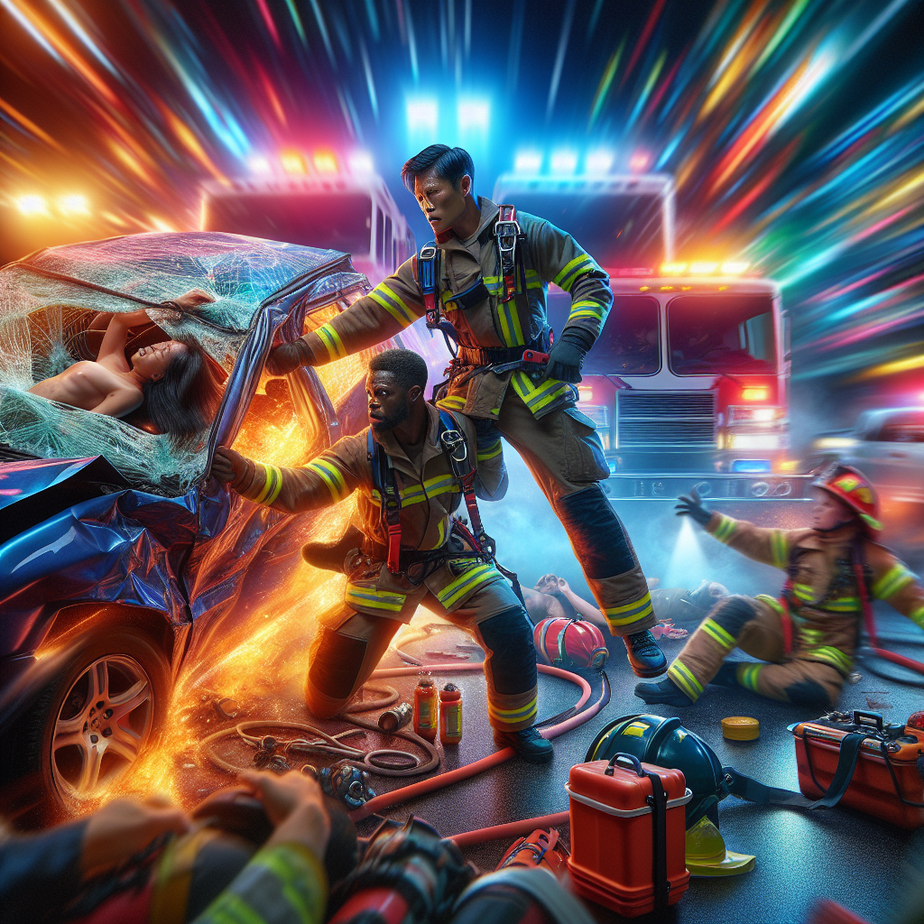Advanced Techniques for Rescuing Trapped Victims in Severe Vehicle Accidents
Every year, thousands of Australians find themselves facing the aftermath of severe vehicle accidents—sometimes as drivers, passengers, or first on scene. Whether you’re a family heading home from footy, a rural motorist, or a career firefighter racing the clock, the reality of trapped victims is as confronting as it is urgent. Your actions, your team’s decisions, and your calm under pressure can make all the difference between rescue and tragedy.
But what exactly does it take to safely rescue someone trapped in a mangled car? For families, it’s knowing what not to do—and when to step back. For frontline crews, it’s advanced techniques, teamwork, and split-second choices. In this guide, we’ll break down everything you need: from preparation and first response, to advanced fireground extrication strategies, through to recovery and real-world tips. We’ll also share links to tools and essential safety gear to help you be ready, whether at home or in the field.
When every second counts, having a Safety Grab Bag Medium 55Ltr Red packed with first aid, hi-vis, and rescue essentials in your boot can give you and your family peace of mind—on the road and during emergencies.
Preparation: Before an Accident Happens
Being prepared is not about living in fear—it’s about giving yourself, your loved ones, and your team the best possible chance. For the public, this means keeping basic first aid supplies, hi-vis vests, and emergency escape tools in the car. For firefighters and SES crews, it’s gear checks, regular vehicle rescue drills, and local route knowledge. If you live rural or travel long distances, always let someone know your ETA and route. Parents, talk to kids about how to call 000 and keep calm in emergencies. Your crew’s readiness—mentally and physically—matters too: a tired or unpracticed team is slower, less coordinated, and more likely to make mistakes.
Immediate Response: First Moments Matter
Step-by-Step: What To Do (and What Not To Do)
- Stay Safe First: Always check for hazards: oncoming traffic, fuel leaks, live wires, unstable vehicles. If not safe, do NOT approach—call for help and warn others.
- Call 000 Early: Give clear info: location, vehicles involved, how many trapped, and visible injuries. Let the operator guide you.
- Reassure the Trapped: Speak calmly. Tell them help is coming. Do NOT try to drag them free unless there’s immediate fire or life threat.
- Firefighters/SES: Secure the scene, assign a team leader, and begin size-up. Use cribbing (stabilisation blocks), isolate batteries, and triage injuries. Communicate with police and paramedics.
For families, don’t break glass or cut seatbelts unless instructed by 000. For crews: delegate roles—hydraulic tools, glass management, and casualty carer. Every hand has a job, and every task must be done with calm, methodical precision.
Advanced Techniques for Rescuers
For Fire Crews & Emergency Teams
Vehicle rescue is not just brute strength—it’s finesse, teamwork, and constant assessment. Your training must cover:
- Rapid Scene Size-Up: Hazards, patient access, and alternative routes
- Stabilisation: Chocks, blocks, air bags—never start cutting on an unstable car
- Glass Management: Window punchers, tape, and shields to avoid flying shards
- Hydraulic Tool Use: Spreaders (“jaws”), cutters, and rams—each with their place and technique
- Cross-Ram Techniques: Pushing apart crushed footwells or dashboards, always minding patient’s position
- Team Communication: Every cut or move should be announced and confirmed
- Casualty Care: Oxygen, neck collars, keeping victims warm, ongoing reassurance
- Vehicle Knowledge: Hybrids/electrics need battery disconnects and can re-energise unexpectedly
For the Public, Families & Bystanders
You are part of the rescue. Your job: Stay calm, help direct emergency crews, comfort victims, and keep others back. Don’t crowd or give conflicting instructions—let trained personnel lead.
- Call for Help: Don’t assume someone else has
- Keep Roads Clear: Make space for arriving trucks—move parked cars if safe
- First Aid: Only what you’re trained for—bleeding control, CPR if directed by 000
- Don’t Attempt DIY Rescue: Forcing doors or pulling trapped limbs can worsen injuries
After the Rescue: Recovery and Reflection
Once the victim is free and in paramedic care, the work isn’t over. For families or bystanders, debrief with loved ones—accidents are traumatic, and it’s normal to feel shaken or overwhelmed. Reach out to local support services or your GP if needed. For firefighters and volunteers, a crew debrief is essential: What went well? What can be improved next time? Psychological first aid for both crews and public is just as important as physical care. Consider what you’ll do differently, and restock or check your kit as soon as possible.
Key Safety Tips for All Situations
- Always carry a basic first aid kit and glass hammer in your vehicle
- Know how to use your car’s hazard lights, hi-vis vests, and emergency triangle
- Teach all family members (including kids) how to call 000 and what to say
- For crews: Check, restock, and test rescue tools before every shift or response
- Stay calm—your voice and actions help victims and responders alike
- Never leave children or pets unattended in vehicles—even briefly
- For volunteers: Record training, attend regional exercises, and share lessons with new members
Common Mistakes & How to Avoid Them
Little-Known Tips & Real-World Lessons
- Electric/hybrid cars often have silent “ready” modes—always check the dash and never assume a vehicle is off
- Rear seats often have manual release latches—helpful for accessing trapped kids or pets
- Rural drivers: Carry a UHF or PLB (personal locator beacon) if outside phone range
- For fire crews: Build rapport with local SES, police, and towies—multi-agency rescues run smoother with trust
- After any accident, write down your memory of what happened for insurance or debrief—details fade quickly
Frequently Asked Questions
Every Australian can play a part in keeping our roads and communities safe. Share this guide with friends, family, or your brigade. Talk about “what if” and check your kit today. For more safety tips and downloadable checklists, explore FireRescue.com.au.
This article was created using practical emergency preparedness and firefighting advice and reviewed for clarity. It is intended as general public information for Australian households, communities, and emergency service teams.



